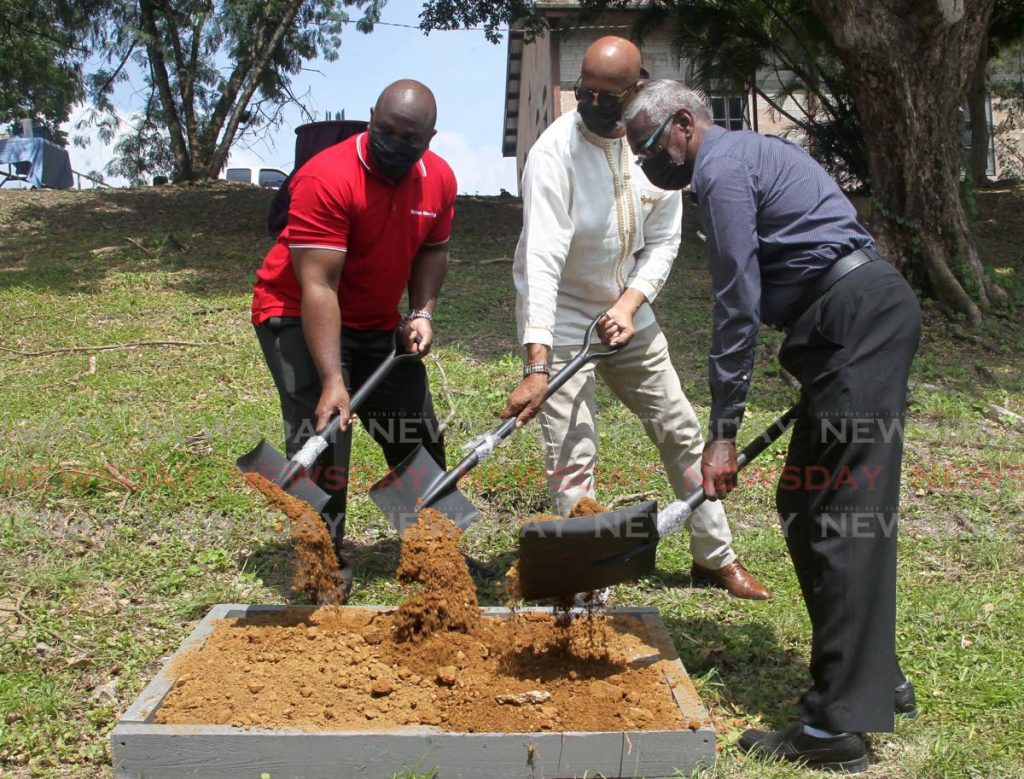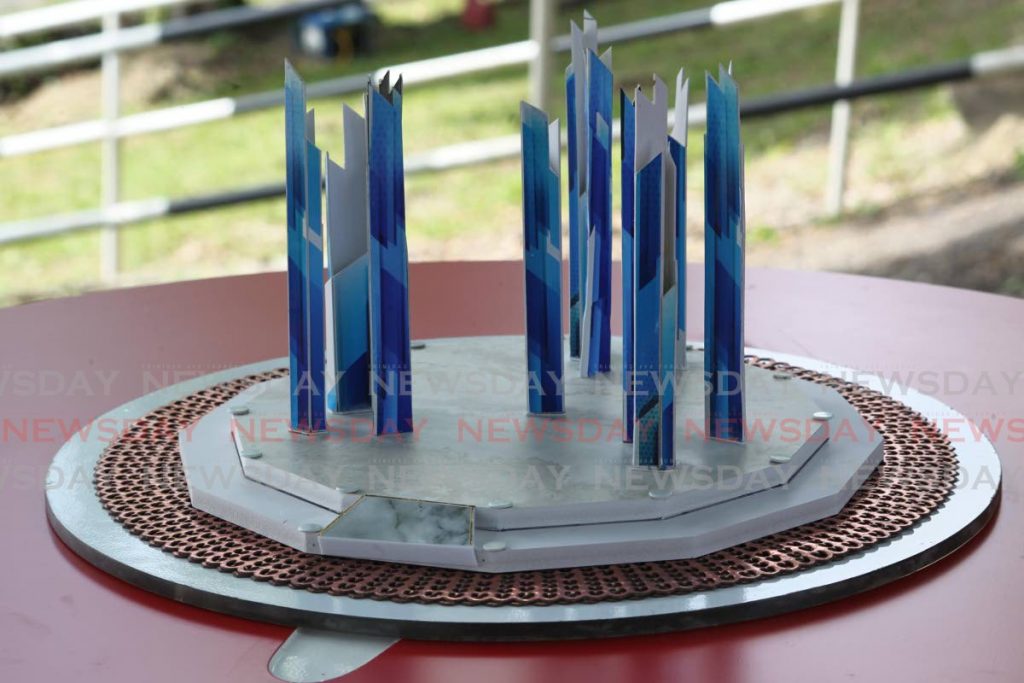137 years later – sod turned for hosay massacre monument

THE sod was turned on Saturday for the erection of a monument to memorialise those killed in the Muharram Massacre, or what is commonly known as the Hosay Riots, on October 30, 1884, at Mon Repos, San Fernando.
It also marked the start of a project by Iere Theatre Productions Ltd, in conjunction with Friends of Mr Biswas to memorialise the Muharram Massacre.
The projects to be implemented will include exhibitions of historical artifacts and memorabilia and a series of lectures at both the Northern and Southern Academy for the Performing Arts and at UWI, St Augustine.
The geometric-shaped design conceptualised by Kemal Manickchand will consist of 12 pillars of different heights and angles – the latter representing the stumps left on the cane stalks after it was harvested by the indentured cutlasses.
Chairman of the Muharram 21 Committee, Victor Edwards said the objective of this educational project is to fill a gap in the historical narrative of TT and to increase knowledge and consciousness among the people about the Muhurram Massacre of 1884.
He described it as, “A national event whose cultural and socio-political significance have yet to be fully appreciated by our citizens.”
He said it is lamentable young people and even some who sit in seats of power are unfamiliar with this dark day in the country’s history.
A simple ceremony was held on the spot where some 21 indentured labourers were killed, and many more injured by the colonial powers at the time, as they made their way in a hosay procession, to drown their tadjahs at King’s Wharf, San Fernando.
Captain Baker, at the time, called on the procession which made its way from several sugar estates at Usine Ste Madeline, Bien Venue, Corinth, Jordan Hill, and other estates to stop. Amidst the noise of the drums and the command spoken in English, which the indentured did not understand, bullets were fired in the crowd.
“There was no riot. There was no rioting. The term riot was imposed to disguise a cold blooded, calculated massacre of people who dared to resist directives of the colonial power. It remains today, the most atrocious act of butchery in Trinidad by the British colonials,” Edwards said.
San Fernando mayor Junia Regrello, who along with Edwards and San Fernando East MP, Brian Manning, turned the sod, agreed reference to the Hosay Riots is an inaccurate account of history and needs to be rewritten.

“It should be the Hosay Massacre,” Regrello said.
Professor Kenneth Ramchand, a member of the Muharram 21 Committee, said this was an attempt by the colonialists to curb self-expression and to strike a pre-emptive blow against a coming together of peoples that seemed threatening, because it suggested society’s natural drift towards national unity.
“We are standing on soil soiled by the blood of our ancestors, shed by British brutality, 137 years ago. We are breathing the air in which their cries still echo, and we hear the wings of restless spirits beating over un-consecrated ground.
“In all piety, we must unchain those straining spirits. We must absorb the energy of their beating wings as a creative force. We must turn the sod and expose sacred ground.”
Manning said it was important to remember the past, saying it was sad for young people not to know their history.

Comments
"137 years later – sod turned for hosay massacre monument"